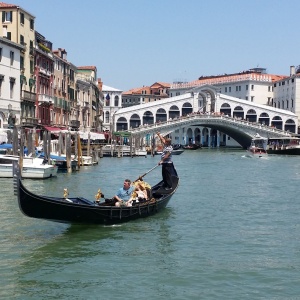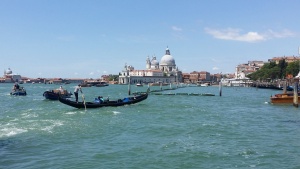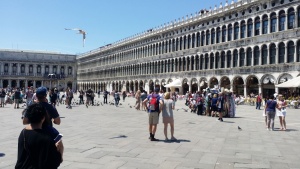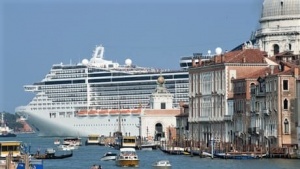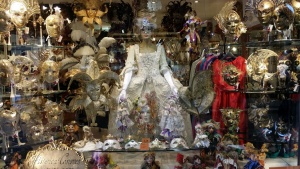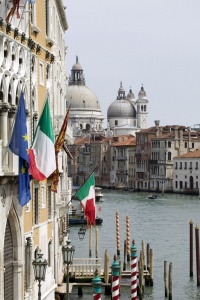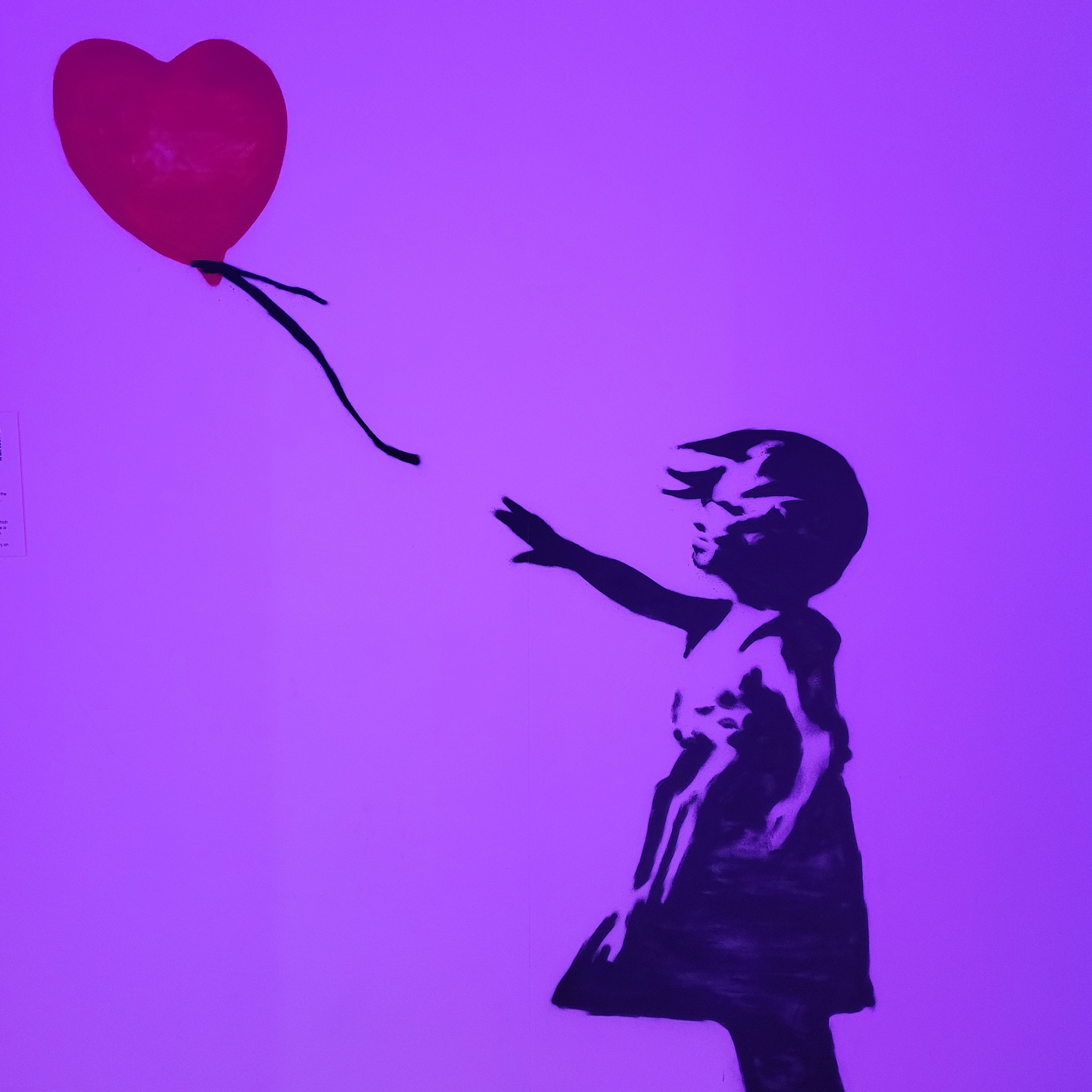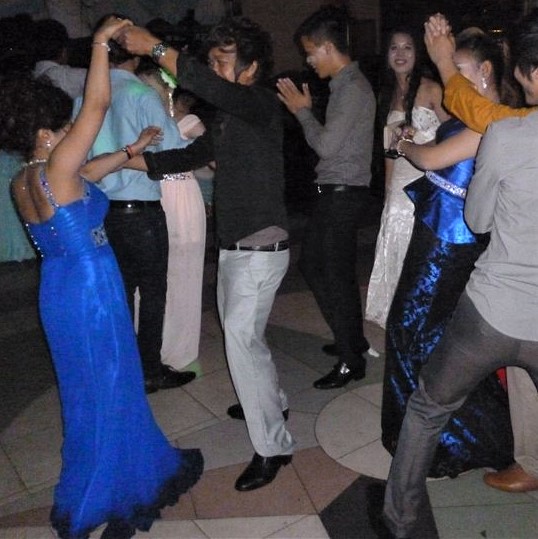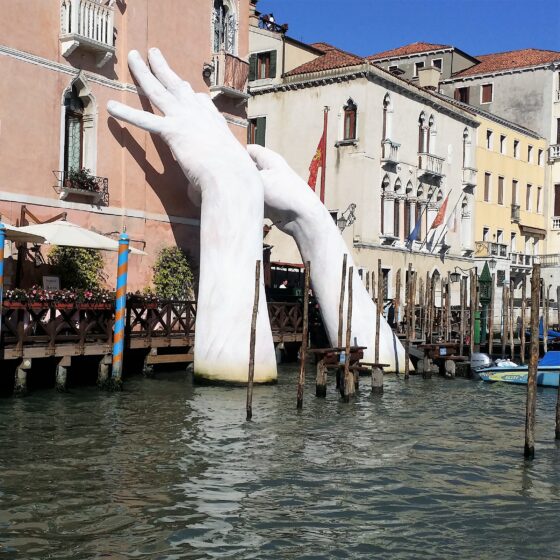
Drowning in Success
“Memory’s images, once they are fixed in words, are erased,” Polo said. “Perhaps I am afraid of losing Venice all at once, if I speak of it, or perhaps, speaking of other cities, I have already lost it, little by little.”
― Italo Calvino, Invisible Cities
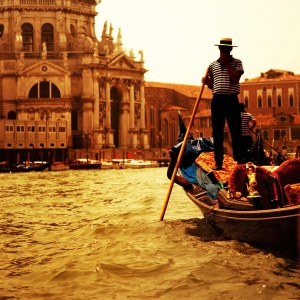 Everyone knows Venice, La Serenissima, the most serene, is sinking. Furthermore, it’s been happening for centuries. Seduced at an early age, stories of a floating city beguiled my imagination. I drank deeply from Canaletto, Tintoretto, Turner, and Monet’s imagery and fed my sensitivities. Later Death in Venice, The Merchant of Venice, Don’t Look Now all added gravitas and allure to the mythology of the city. I missed Atlantis, damn, no way I won’t walk the alleyways, glide the canals, stroll across some of the four hundred bridges linking the disappearing city. I want to step off a gondola into the early morning mists swirling around St Mark’s Plaza, or arrive by vaporetto smoking, sunglasses shielding greedy eyes, hungry to taste the city’s pulsing heart. No time for bucket lists, seeing Venice before it goes under is imperative.
Everyone knows Venice, La Serenissima, the most serene, is sinking. Furthermore, it’s been happening for centuries. Seduced at an early age, stories of a floating city beguiled my imagination. I drank deeply from Canaletto, Tintoretto, Turner, and Monet’s imagery and fed my sensitivities. Later Death in Venice, The Merchant of Venice, Don’t Look Now all added gravitas and allure to the mythology of the city. I missed Atlantis, damn, no way I won’t walk the alleyways, glide the canals, stroll across some of the four hundred bridges linking the disappearing city. I want to step off a gondola into the early morning mists swirling around St Mark’s Plaza, or arrive by vaporetto smoking, sunglasses shielding greedy eyes, hungry to taste the city’s pulsing heart. No time for bucket lists, seeing Venice before it goes under is imperative.
Having drawn a list of the “postcard cities of Europe” I undertook an eight-week tour of pure sensory indulgence. Venice was the fulcrum, my turning point, the northern entry to an unfolding itinerary of Italian delights heading south. Years of yearning made it the obvious choice as the place to start my Italian sojourn. I flew into Venice Airport. Owners of beautiful matching luggage sauntered to the water taxis for their journey to the island of dreams. I bused into Mestre, the last mainland city before crossing the water to over one hundred and eighteen islands collectively called Venice. Technically included in Venice’s jurisdiction I took a hotel residence in the seedier part of town. San Marco, the tourist heart is only nine kilometres away via bus then the Grand Canal. My oversized suitcase clearly signified to the local street gang a new batch of drugs arriving rather than the four weeks of laundry I knew was backed up inside. Or maybe it was the black pork pie hat, sunglasses, and slow cautious walk along the cobbled laneway. Mistaken as the returning Cosa Nostra I was enthusiastically greeted. The capo di tutti i capi is back in town.
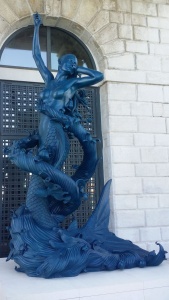 It was Venice biennial where even the public brouhaha from Damien Hirst’s elaborate hoax Treasures from the Wreck of the Unbelievable at Palazzo Grassi proved more satisfying than my longed-for romance with the city of Venice. I have been robbed; my heart crushed at what is being passed off as the most romantic city on earth. And it is World Heritage listed! Disappointed? Doesn’t even come close. Granted my expectation could be unreasonable. The canals were there, buildings hugged the water line, an abundance of palaces, cathedrals and spires, Venetian glass, carnival masks and costumes plentiful, quaint arced bridges link narrow pathways. Gloss black gondolas pass underneath poled by strip shirted men, red kerchief knotted at their throat, some topped with black berets others in boaters. All the promised ingredients. So, what went wrong? In a word, tired. Not me, Venice.
It was Venice biennial where even the public brouhaha from Damien Hirst’s elaborate hoax Treasures from the Wreck of the Unbelievable at Palazzo Grassi proved more satisfying than my longed-for romance with the city of Venice. I have been robbed; my heart crushed at what is being passed off as the most romantic city on earth. And it is World Heritage listed! Disappointed? Doesn’t even come close. Granted my expectation could be unreasonable. The canals were there, buildings hugged the water line, an abundance of palaces, cathedrals and spires, Venetian glass, carnival masks and costumes plentiful, quaint arced bridges link narrow pathways. Gloss black gondolas pass underneath poled by strip shirted men, red kerchief knotted at their throat, some topped with black berets others in boaters. All the promised ingredients. So, what went wrong? In a word, tired. Not me, Venice.
Each day tourists flock. European summer, and high season was not letting us down. Heat I managed, plus I’d come to terms with crowds. What I couldn’t tolerate was tourists lack of respect and interest in their surrounds. Heads down content tracking their whereabouts, unconcernedly dropping cigarette butts, food wrappers, and plastic drink bottles, doggedly following Google Maps blue dot directions. Tour groups moving as a flotilla of umbrellas, lowered to eye level in my case, to shield delicate dispositions against the harmful rays. Cluttering landmark views, intrusively jabbing and poking selfie-sticks in the chase for the prefect social media shot before choose filter, a quick caption, add hashtags, upload and go. Smart phone technology constitutes the tourist experience replacing seeing, feeling, smelling, touching, asking, doing, missing the immediacy of where you actually are. What they take-away, other than the abundant inauthentic fast food, is a pale version of what is on offer.
If you are lucky enough to meet a true and local Venetian, they are disappearing quicker than their city is sinking, you hear a story involving greed, ineptitude, graft, corruption, that creeps through their governing body at an alarming rate commensurate with the race against climate change undeniably washing the city away. In response to climate change a multi billion-dollar program to construct 78 underwater gates to hold back the Adriatic whenever sea levels rise worryingly is embroiled in a corruption scandal stalling completion. A former mayor, along with 35 public officials and contractors, allegedly skimmed tens of millions of euros from public coffers. Natural subsidence in Venice and surrounding lagoons is running between 2 to 4 millimetres a year. Floods are more frequent, four or five times a year, necessitating walking on wooden planks to stay above floodwaters in large parts of the city. A surge in the number of B&Bs has made it almost impossible for residents to find a home to rent on a long-term contract so depart the islands in vast numbers. Venice’s population has fallen from about 175,000 in the post-second world war years to 55,000 today. Depopulation and mass tourism are causes of local despair fearing Venice will house more tourists than locals and the tipping point may not be far away.
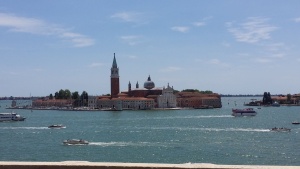 I realise that if tourists are the problem then I have painted myself as the villain of my own piece; let me deflect by pointing the finger of blame elsewhere. The true culprits for my Euro are the super liners that chug through the Giudecca canal four or five times a day. The size of these monsters block views. Emitting fumes, disgorging thousands of people, some days as many as 44,000 into the historic centre, part of the 28 million who troupe through each year. I’m not alone here, Venetians are quick to point the blame at cruise-ship passengers for the demise in their quality of life, arguing that they stay for only a few hours, spend very little money and leave a trail of litter in their wake.
I realise that if tourists are the problem then I have painted myself as the villain of my own piece; let me deflect by pointing the finger of blame elsewhere. The true culprits for my Euro are the super liners that chug through the Giudecca canal four or five times a day. The size of these monsters block views. Emitting fumes, disgorging thousands of people, some days as many as 44,000 into the historic centre, part of the 28 million who troupe through each year. I’m not alone here, Venetians are quick to point the blame at cruise-ship passengers for the demise in their quality of life, arguing that they stay for only a few hours, spend very little money and leave a trail of litter in their wake.
Taking a boat to Murano island, the home of Venetian glass, restored my dream somewhat. Here I saw artisan glassblowers sitting before open furnaces turning molten glass miraculously to works of art. The most beautiful and spectacular destined for global markets. For someone who is beguiled by anything shiny this is paradise. A couple of hours spent wandering the Venetian Glass Museum bedazzled, reinvigorating my jaded disposition. The isle of Lido not so curative. There are some architectural wonders on the walk between the arrival jetty through the residential and downtown area to the ocean. However, the sea front beach a windswept grey dust horror lapped by a tepid soupy sea I wouldn’t take a dog into. Returning home along the Grand Canal rising damp and high tide flood lines are a reality check, a glaring reminder of the need for action. Window boxes spill with plastic flowers. The Rialto Bridge a squash of human traffic. No, I didn’t return to see Venice by night, the time when most people rave about its mesmerising romantic beauty. I sat with the street gang in the cobblestone lane way outside my seedy hotel in Mestre explaining why I couldn’t supply their order.



